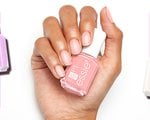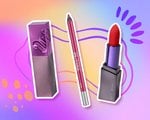How to Wear Makeup When Your Skin Is Peeling From Retinol
April 12, 2023
What Is Retinol?
Retinol is a vitamin A derivative that helps speed up your skin’s cell turnover. As we age, our cellular turnover starts to slow down, which can result in more visible wrinkles, fine lines, discoloration and uneven texture and tone. Retinol helps address these signs of aging and promotes a smoother, more even-looking complexion, according to a study in the National Library of Medicine. The ingredient can be found in varying strengths and formulas, from gentle, over-the-counter retinols to more potent, prescription-strength retinoids.
What Does Retinol Do?
Retinol helps minimize visible signs of aging, including wrinkles, fine lines, discoloration, dark spots and uneven skin texture. It can help improve signs of photo-aging from UV rays and make your skin look more even.
Does Retinol Make Your Skin Peel?
Despite all of retinol’s benefits, it also comes with some potential side effects. As your skin gets used to retinol in a process known as retinization, you may start to experience increased sensitivity, redness, itchiness, dryness and, yes, even skin peeling.
How to Safely Use Retinol
Start With a Low Concentration
If it’s your first time using retinol, you’ll want to start with a low concentration of the ingredient. We recommend looking for an over-the-counter product that contains less 1% retinol — 0.3% tends to be a good starting point. You can also visit a board-certified dermatologist to ask for a prescription-strength retinoid, such as tretinoin. Tretinoin is more potent than over-the-counter retinols, but it comes in a wider range of strengths, starting as low as 0.25%, so it can still be beginner-friendly. We suggest speaking with your dermatologist to ensure retinol is right for your skin concerns.
Don’t Use Your Retinol Every Day
Unlike most skincare products, where daily use is key to achieving your desired results, retinol is an ingredient you need to ease your way into. Start by applying your retinol of choice twice a week at night, then gradually increase your use to three times a week, then every other day and finally every day (although if daily use is too irritating for your skin, stick to every other day instead). This will help your skin adjust to the retinol and help lessen your risk of peeling and irritation. Your dermatologist can help you determine the right routine for you.
Combine Retinol With a Gentle Skincare Routine
When using retinol, it’s important to make sure the rest of your skincare routine is gentle and hydrating. Skip exfoliants and harsh acids (at least on the nights you use retinol) and instead keep your routine simple with a gentle cleanser, moisturizer and an optional barrier-repair cream. We love the Kiehl’s Ultra Facial Advanced Repair Barrier Cream, which can be applied all over the face or used to comfort dry, flaky patches specifically.
Try Retinol Sandwiching
If your skin is on the dry and sensitive side, you might want to consider the “retinol sandwich” method. To do so, apply a layer of moisturizer first, then retinol, then seal it in with a second layer of moisturizer. This will help keep your skin soft and hydrated and prevent retinol-peeling.
Remember Your SPF
In addition to flaking, retinol can also make your skin more sensitive to sunlight. That’s why most dermatologists recommend applying retinol at night only. You should always use a broad-spectrum sunscreen that contains at least SPF 30 in the morning, and continue to reapply throughout the day.
How Often to Use Retinol
You should start by applying retinol two nights a week, then gradually increase usage to three nights a week, every other day and finally every day as tolerated. We recommend speaking with a dermatologist to determine the best retinol routine for you.
Should You Keep Using Retinol if Your Skin Is Peeling?
Before we get into the topic of makeup, let’s talk skincare. If you’re experiencing excessive dryness and peeling from using retinol, stop using the product and consult a dermatologist. They may suggest a gentler formula or recommend that you limit your use of the ingredient (every other night or even just twice a week). If dryness persists, your skin may just take a few weeks to adjust before it returns to normal.
How to Wear Makeup With Retinol Peeling
Tip 1: Prep Your Skin With Moisturizer
“Before applying makeup, make sure to apply moisturizer to hydrate and protect your skin,” says Dr. Zeichner. “Look for ingredients like hyaluronic acid, which acts like a sponge to pull in hydration to the skin.” He also says that instead of applying heavy makeup, it’s best to opt for a tinted moisturizer when your skin is acting up. For a product that offers coverage and hydration, we like the IT Cosmetics CC+ Nude Glow Lightweight Serum + Foundation.
Tip 2: Skip the Exfoliator
While exfoliating should be a regular part of your routine, it’s best to avoid exfoliating products when your skin is acclimating to retinol. “Exfoliating can cause more harm than good, leading to irritation and inflammation,” says Dr. Zeichner. “Also stay away from makeup that contains botanicals, acids or other ingredients that can cause irritation of the skin.”
Tip 3: Consider Skipping Makeup
“If your skin is inflamed from retinol, my best recommendation is to apply a bland moisturizer and skip makeup for the day if possible,” says Dr. Zeichner. “You are better off letting your skin calm down so you can resume your normal makeup routine in the future.” In need of a non-irritating moisturizer? We love the CeraVe Moisturizing Cream.
Tip 4: Do Not Apply Product on Open Skin
If peeling has left your skin feeling raw, it’s best to hold off on the makeup because it could irritate the skin and potentially cause even more inflammation when you remove the product before bed. “Remember that applying makeup is the first part of the story,” says Dr. Zeichner. “You need to remove it in a way that doesn’t cause inflammation to the skin.”
Our Favorite Beauty Products With Retinol
Kiehl’s Micro-Dose Anti-Aging Retinol Serum with Ceramides and Peptide
To get the potent results of retinol with less risk of irritation, try this gentle serum. Ceramides and peptides help balance retinol’s drying effects, and the pump dispenses a pea-sized amount of product every time, so you can ensure you’re not over-applying.

Vichy LiftActiv Pure Retinol Serum
Using a combination of .2% pure retinol, peptides and nutrient-rich vitreoscilla ferment, this serum helps smooth the appearance of deep wrinkles. It also helps fade visible dark spots and gives your skin a glow — especially when combined with SPF and an antioxidant in the AM.

Youth to the People Retinal + Niacinamide Youth Serum
Smooth and brighten skin with this blend of retinal (the strongest form of retinoid outside of a prescription) and 5% niacinamide. The combination evens out skin tone while targeting the look of pores, fine lines and texture.

SkinCeuticals Retinol 0.3
This 0.3% retinol formula was created for first-timers. Start by using this product just once or twice per week to develop a tolerance and work up to using every other night.

La Roche-Posay Effaclar Adapalene Gel
This 0.1% topical retinoid treatment is great for acne-prone skin. It’s a prescription-strength gel that’s non-comedogenic and works to fight blackheads, whiteheads and clogged pores. Use a pea-sized amount at night and make sure to apply an SPF every morning — retinol can make your skin more sensitive to UV rays.

Herbivore Moon Fruit 1% Bakuchiol + Peptides Retinol Alternative Serum
Bakuchiol is a plant-based alternative to retinol that promises to deliver similar results with less irritation. This silky purple serum works to resurface skin to reduce the appearance of fine lines and wrinkles.

Photo: Melissa San Vicente-Landestoy, Design: Juliana Campisi
































